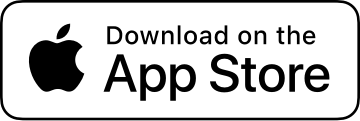Cadence featured on Cycling Weekly’s YouTube channel
Transcript
The best cycling computers are only going one way in price—and that’s up. Sure, their functionalities are getting more extensive, but it’s almost reaching the point of having features just for the sake of it. However, most of us already own a device that’s just as competent as many of the best cycling computers—I am, of course, talking about your smartphone.
These devices often cost as much as, if not more than, the best cycling computers—and for good reason. Smartphones are packed full of technology and capability. What you need are the right tools to unlock all that potential. Happily, there’s an American company called Cadence that has managed to do just that.
Cadence has created an interface that feels familiar and includes all the tools and features you’d expect from a Garmin or Wahoo device. What may surprise you, however, is just how extensive this functionality really is.
First, let’s talk about the interface. You can create as many customized screen layouts as you like and easily swipe between them while riding. You can display up to 24 data points simultaneously or choose just one to have full-screen. Cadence also includes multiple pre-made layouts to get you started, though you should be prepared to spend some time fine-tuning things to your liking. There are over 100 different data points available, and each data field is customizable, from text color to background colors (light or dark) and even heart rate and power zone colors. In short, you really can make the interface your own. Plus, since you’re using a smartphone, you benefit from fast response times and a bright display, ideal for riding during the day.
While a fully customizable interface is impressive, it’s somewhat expected from an app. What might surprise you more is its extensive compatibility with external devices. For example, you can pair heart rate straps, speed sensors, cadence sensors, and power meters directly to the app. It also works seamlessly with exercise bikes like the Schwinn IC4 and Bowflex C6, as well as indoor trainers like the Wahoo Kickr and Tacx Neo.
But it doesn’t stop there. If you have a radar fitted to your bike, like a Garmin Varia or Bryton Gardia, those too will connect to Cadence. Once connected, the main screen shows you how many vehicles are behind you and how fast they’re approaching, just as you’d see on a dedicated head unit. You can even set up audio alerts for added awareness.
Navigation is a fundamental requirement for any GPS cycling computer. You likely already use your phone for navigation, whether in the car or on foot, so why not use it on your rides as well? With Cadence, you can create custom routes featuring turn-by-turn navigation for cycling, running, or even driving. You can save your existing activities as routes or import GPX files from popular sources like Strava, Komoot, Garmin, and others. If you’re already out riding and decide to head to a nearby café, simply enter your destination, and the app will guide you there.
Another exciting feature is the support for Strava Live Segments. Cadence allows you to view all nearby segments and switch between them via a detailed interface. You can monitor your progress in comparison to previous efforts, with clear maps and elevation graphs showing how far ahead or behind you are and the distance remaining. Of course, the live segment screen is fully customizable. And once your ride is complete, Cadence automatically syncs your activities to Strava.
Clearly, Cadence has unlocked the full potential of using your smartphone as a dedicated cycling computer. With secure mounting options such as Quad Lock or budget-friendly alternatives, it’s easy to attach your phone to your bike. Plenty of waterproof cases are available to protect your phone from the elements, too.
One consideration is battery life. Typically, Cadence uses around 10 to 20% battery per hour, depending on your device and settings. Cadence offers battery-saving features like Dark Mode and auto screen dimming, but it’s wise to either have a charging option at your destination or carry a small power bank.
If you’re thinking of buying your first cycling computer, I strongly encourage you to consider using your phone instead. Technological advancements have eliminated many of the limitations phones previously faced as cycling devices, potentially saving you hundreds of pounds.
Cadence is free to use, but Pro and Elite versions unlock additional functionality. You can compare the different membership levels on the Cadence website, which I’ve linked below.
I haven’t even covered all of Cadence’s features—such as detailed analytics, live tracking, and the standalone Apple Watch app—as there’s simply too much to discuss in a single video. Let me know your thoughts: would you consider using your phone instead of a dedicated cycling computer?
[Transcript edited for grammar and clarity]

